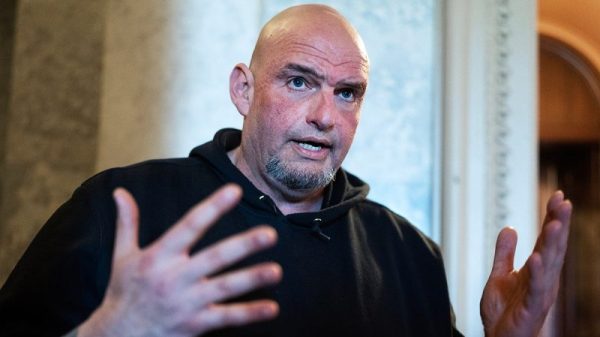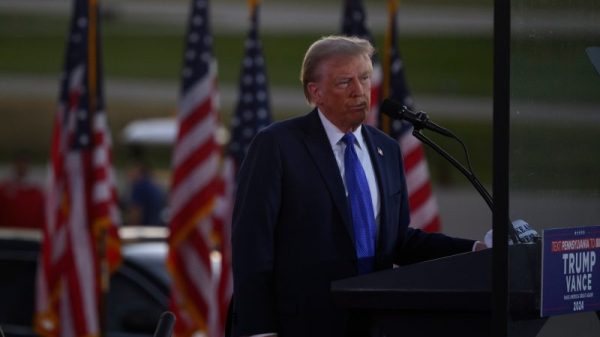After the rape and murder of a trainee doctor at a hospital and medical college in West Bengal in August, thousands of women across the Indian state took to the streets in protests to “Reclaim the Night.”
Meghamala Ghosh went along to one of them with her mother. But staying out so late went against every self-preservation impulse the 23-year-old had learned as a young woman in a country afflicted by endemic sexual violence.
“As soon as it was 12, I felt ‘It’s getting too late, it’s getting too late, it’s getting too late,’” she said. “This is a constant thing that’s going on in my head.”
As the pair traveled home in an e-rickshaw, a group of men waved the vehicle to a halt and began surrounding it, shouting and leering at them on the deserted road. Unsure whether she could trust the driver, Ghosh tightly gripped the kitchen knife she had brought with her for protection.
The driver managed to speed away, and dropped them home safely.
Instead of leaving energized by the sight of thousands of women on the streets at the late hour, Ghosh was left thinking: “How can we reclaim the night when the night was never ours to begin with?”
Several other protesters reported being intimidated and harassed by men who invaded the demonstration and told them to go home.
The event was part of a wave of increasing participation and leadership from women in protests across South Asia, activists and organizers say. But just as notable is a gendered backlash to that wave, involving tactics seemingly intended to subdue female dissent.
Tools of Repression
“Women have always been involved in protests in places like India, Bangladesh and Pakistan but the difference is that they’re taking on more leadership roles and are the primary actors,” Heather Barr, associate director of Human Rights Watch’s women’s rights division, said.
“In Afghanistan, for example, the only social resistance the Taliban is currently facing is from women.”
Since the 2021 fall of Kabul to the Taliban, women have seen their rights restricted across the board, including recent restrictions on their voices in public.
While misogyny and marginalization afflict women’s lives the world over, conservative social attitudes to gender can be particularly pronounced in South Asia.
In India, a rape is reported every 17 minutes, government data shows. In 2012 when a woman was raped and murdered on a bus, the nation was outraged and after a massive wave of protests there were some amendments to rape laws. Yet women in India experience sexual harassment daily, says Ghosh.
In Bangladesh, women deal with daily harassment, says Nazifa Jannat, a student and political activist. And she doesn’t see this improving anytime soon. “When you’re walking on the road you constantly feel eyes on you, whether it’s a busy market or a deserted road,” she said.
According to Deanne Uyangoda, protection coordinator in Asia Pacific for NGO Front Line Defenders, while women have always been integral to protest movements in South Asia, “their role in co-creating those spaces and in organizing, mobilizing building trust and building framing of why these protests are happening” has become more pronounced.
In Pakistan, one woman leading the charge is Sammi Deen Baloch.
She was 10 when her doctor father was forcibly disappeared from the hospital where he was working in 2009, she said. Having participated in the fight for his return since childhood, she is now one of the faces of the movement against enforced disappearances in Balochistan.
The sparsely populated province, Pakistan’s largest, is rich in natural resources and home to the strategically important Gwadar port. But the restive region is also home to some of Pakistan’s most marginalized people, who say they face persecution from the government, as well as military and paramilitary forces in the region.
In September alone, 43 cases of enforced disappearances were reported in Balochistan, the Human Rights Council of Balochistan said in October.
In 2016, Baloch herself was forcibly disappeared by Pakistan’s intelligence agency and held in captivity for seven days, she said. She had no idea where she was, and could not tell night from day.
“While talking to me they were saying that as you know you are 18 years old, you are young, so you know what can happen to you. By saying these things they wanted to make being a woman a weakness,” she said, adding that the threat of sexual violence was implicit.
Such threats “are deployed much more against women than men, as is sexual violence itself,” said Barr.
From November to January this year around 200 women, along with children and some men, marched from Balochistan to Islamabad to protest the killing of 24-year-old civilian Balaach Mola Bakshsh, who they said had been killed by authorities after being forcibly disappeared.
When they reached the capital, they said police responded with water cannons, the sting of which was worsened by the frigid winter temperatures.
Islamabad police at the time denied that there were women or children in the crowd and said officers refrained from using force for six hours. “But when force was used against the police, we had to move to protect ourselves,” Akbar Nasir Khan, the inspector general of Islamabad police, told reporters. Protesters denied initiating the violence.
As the women camped out in Islamabad for nearly a month from late December, cameras were installed around the protest site, with a heavily male police and military presence. For women wearing Islamic face coverings or headscarves, many felt this was a clear attempt at weaponizing their modesty against them, said Baloch.
“We choose to wear a hijab or a niqab, for us it’s an important sign of respect… in our culture women are always treated with a level of dignity and this is how we choose to present ourselves,” Baloch said.
During the sit-in, Baloch found herself having to appear in front of TV cameras with her face uncovered. Until then, she would always wear a niqab or mask on camera, but after fabricated pictures of her spread on social media, she had to take off her face covering.
“For women, one of the first things they do is character assassination. So I took the decision to show my face because I did not want to let them think this was my weakness,” Baloch said.
Surveillance is another tool of repression used liberally against protesters. Baloch is used to being followed everywhere by men, both in plain clothes and in uniform. “They want to make you feel like you are constantly being watched, that you’re on their radar,” she said.
Uyangoda said weaponizing women’s modesty against them or encroachments on their privacy is a recurring theme in South Asia.
“There have been instances where they have turned up in your house at, let’s say, early hours in the morning, male officers in remote areas, you know, videoing you while you are still in whatever state of dress you are in,” she said, recalling several such instances reported to her by activists in the region.
A similar experience befell Khadijah Shah, a fashion designer turned activist who was among the most prominent voices against the arrest of Pakistan’s former Prime Minister Imran Khan during protests in May last year. Khan was arrested on multiple charges of corruption following months of political turmoil after his ouster as prime minister.
It’s still a live issue. On Tuesday, security forces launched a night-time operation to disperse thousands of Khan supporters led by his wife Bushra Bibi, after the crowd broke through barricades and gathered in Islamabad demanding his release.
When Shah first heard of the protests last year, she was quick to join them. She has always felt the need to speak up, she said, having first attended protests as a young girl with her grandfather, a former chief of army staff.
Abuse and threats
The backlash was swift and vocal.
“My photo was shared everywhere, there were people calling for my rape by the police and saying I should be skinned alive,” Shah recalled.
Shah spent about eight months in jail before being released on bail, with multiple cases filed against her for participation in the protests.
She said one of the worst intimidation tactics she had to contend with was threats against her family. She turned herself in after the protests because authorities detained her father and brother.
“I think it’s much easier to threaten the family of a woman because, in patriarchal societies, a male family member might feel that he can exercise control over a female member of his family,” Barr said, adding the threats themselves were also “real and frightening.”
Earlier this summer Bangladesh was transformed by student-led protests that snowballed into bringing down 15 years of rule by increasingly autocratic Prime Minister Sheikh Hasina.
According to student-protester Jannat, while women have previously participated in protests in Bangladesh, this time many women, including her, played a leadership role.
“People are more willing to follow women, and more women are also confident enough to assume leadership, irrespective of what her family or society has to say about it,” Jannat said.
Doing so was not without its challenges. In many cases women who participated did so without familial support.
“I have a very close friend, I saw fear in her eyes that if her family got to know that she is involved in the protest she will face many setbacks,” Jannat said.
“That’s a very common scenario.”
“Many defenders carry burdens, carry responsibilities to their communities, to their families,” Uyangoda said. “Many defenders are caregivers, but women human rights defenders, I think may be disproportionately so.”
Yet on the streets, they did not shy away from the front lines.
“We were on the front lines of the protests, our male comrades would push us in the front and we believed that perhaps the paramilitary would be hesitant to hit us,” Jannat said.
However, their gender did not protect them in the way that they thought it would and several protesters, including women, were baton-charged during a march from Dhaka University in July.
According to Uyangoda while all protesters have to be wary of violence, women defenders also deal with a constant “fear of sexualized violence.”
Although Barr credits the female protesters who brought about a change in Bangladesh, she questions if this will translate into greater political representation and rights for women going forward.
“How much of a voice will women have in the upcoming government remains to be seen but we need to move away from tokenistic individual representation to collective representation,” Barr said.
According to Uyangoda, the activists emerging from the region are pushing for exactly that.
“There will always be, in a movement, people who are visible. Behind these women, there are other women. There are many other women. There are men, there are youth.”
Barr sees a mixture of concern and hope.
“Globally we’re in a pretty alarming space in terms of what feels like declining democracy and rising authoritarianism and the attack on women’s rights and LGBT rights are a central part of that playbook,” she said.
“But we are seeing incredibly powerful protest movements from women around the world… they’re amping up not backing down.”
Ghosh, Baloch, Shah and Jannat all have that in common. Despite the backlash they’ve faced, they’re only emboldened to continue to fight for their rights.
“If not now, then when?” Jannat said. “I knew that this was an important moment for our nation and I had to stand up, no matter the consequences.”







































